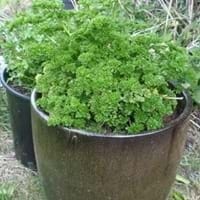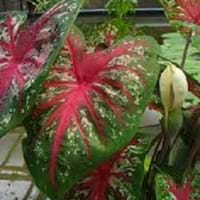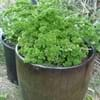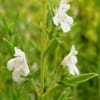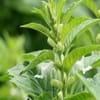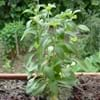Life Span
Annual or Biennial
Annual and Perennial
Type
Herbs
Tender Perennial
Origin
Southern Europe
Southern Europe, Mediterranean
Types
Not available
Not Available
Habitat
Subtropical climates, Temperate Regions
gardens, Grassland, Prairies, tropical environments, Tropical regions
USDA Hardiness Zone
6-9
7-9
Sunset Zone
A3, 1a, 1b, 2a, 2b, 3a, 3b, 4, 5, 6, 7, 8, 9, 10, 11, 12, 13, 14, 15, 16, 17, 18, 19, 20, 21, 22, 23, 24
4, 5, 6, 14, 15, 16, 17, 18, 19, 20, 21, 22, 23, 24
Habit
Clump-Forming
Mat-forming
Flower Color
Yellow green
White, Green
Flower Color Modifier
Bicolor
Bicolor
Fruit Color
Sandy Brown
Green
Leaf Color in Spring
Green
Gray Green
Leaf Color in Summer
Green
Gray Green
Leaf Color in Fall
Green
Gray Green
Leaf Color in Winter
Light Green
Light Green
Leaf Shape
Pinnate
Linear
Plant Season
Spring, Summer, Fall
Spring, Summer, Fall, Winter
Sunlight
Full Sun, Partial Sun
Full Sun, Partial Sun
Type of Soil
Loam, Sand
Loam, Sand
The pH of Soil
Neutral
Neutral, Alkaline
Soil Drainage
Well drained
Well drained
Bloom Time
Early Summer, Summer
Spring, Late Spring, Early Summer, Summer, Late Summer, Early Fall
Tolerances
Drought
Drought
Where to Plant?
Ground
Container, Ground, Pot
How to Plant?
Seedlings, Transplanting
Seedlings, Stem Cutting
Plant Maintenance
Medium
Medium
Watering Requirements
Average Water Needs, Requires regular watering
Allow soil to be completely dry in between waterings, Water Deeply, Water less during winter
In Summer
Lots of watering
Lots of watering
In Spring
Moderate
Moderate
In Winter
Average Water
Average Water
Soil pH
Neutral
Neutral, Alkaline
Soil Type
Loam, Sand
Loam, Sand
Soil Drainage Capacity
Well drained
Well drained
Sun Exposure
Full Sun, Partial Sun
Full Sun, Partial Sun
Pruning
Remove damaged leaves, Remove dead branches, Remove dead leaves
Cut or pinch the stems, Do not prune during shooting season, Prune if you want to improve plant shape, Prune prior to new growth, Remove deadheads
Fertilizers
All-Purpose Liquid Fertilizer
No fertilizers needed
Pests and Diseases
bees, Birds, Caterpillars, Red blotch
fungus, Insects, Red blotch
Plant Tolerance
Drought
Drought
Flower Petal Number
Single
Single
Fragrant Bark/Stem
Yes
No
Foliage Texture
Medium
Fine
Foliage Sheen
Glossy
Matte
Attracts
Butterflies
Bees, Birds, Butterflies
Allergy
Anaphylaxis, angioedema, Rhinitis
Skin irritation
Aesthetic Uses
Not Used For Aesthetic Purpose
Beautification, Showy Purposes
Beauty Benefits
Not Available
Not Available
Environmental Uses
Air purification
Air purification
Medicinal Uses
Antioxidants, Vitamin A, Vitamin B, Vitamin K
No Medicinal Use
Part of Plant Used
Leaves, Stem
Whole plant
Other Uses
Used as a nutritious food item, Used for its medicinal properties
Showy Purposes
Used As Indoor Plant
Yes
No
Used As Outdoor Plant
Yes
Yes
Garden Design
Edible, Herb, Vegetable
Alpine, Container, Edging, Foundation, Groundcover, Mixed Border, Rock Garden / Wall
Botanical Name
PETROSELINUM crispum 'Extra Curled Dwarf'
CALADIUM 'Aaron'
Common Name
Curly Parsley, Curlyleaf Parsley, Extra Curled Dwarf Parsley, Parsley
Aaron Caladium, Angel Wings, Fancy-leaved Caladium
In Hindi
घुंघराले अजमोद
Aaron Caladium
In German
Karle Petersilie
Aaron Caladium
In French
Karle persil
Aaron Caladium
In Spanish
perejil karle
Aaron Caladium
In Greek
Karle μαϊντανό
Aaron τροπικό φυτό
In Portuguese
Karle salsa
Aaron Caladium
In Polish
Karle pietruszki
Aaron Caladium
In Latin
Karle apio
Aaron Caladium
Phylum
Tracheobionta
Tracheophyta
Class
Magnoliopsida
Liliopsida
Order
Apiales
Alismatales
Genus
Petroselinum
Caladium
Clade
Angiosperms, Asterids, Eudicots
Angiosperms, Monocots
Tribe
Not Available
Not Available
Subfamily
Not Available
Aroideae
Number of Species
Not Available
Not Available
Importance of Curly Parsley and Aaron Caladium
Want to have the most appropriate plant for your garden? You might want to know the importance of Curly Parsley and Aaron Caladium. Basically, these two plants vary in many aspects. Compare Curly Parsley and Aaron Caladium as they differ in many characteristics such as their life, care, benefits, facts, etc. Every gardener must at least have the slightest clue about the plants he wants to plant in his garden. Compare their benefits, which differ in many ways like facts and uses. The medicinal use of Curly Parsley is Antioxidants, Vitamin A, Vitamin B and Vitamin K whereas of Aaron Caladium is No Medicinal Use. Curly Parsley has beauty benefits as follows: Not Available while Aaron Caladium has beauty benefits as follows: Not Available.
Compare Facts of Curly Parsley vs Aaron Caladium
How to choose the best garden plant for your garden depending upon its facts? Here garden plant comparison will help you to solve this query. Compare the facts of Curly Parsley vs Aaron Caladium and know which one to choose. As garden plants have benefits and other uses, allergy is also a major drawback of plants for some people. Allergic reactions of Curly Parsley are Anaphylaxis, angioedema and Rhinitis whereas of Aaron Caladium have Skin irritation respectively. Having a fruit bearing plant in your garden can be a plus point of your garden. Curly Parsley has no showy fruits and Aaron Caladium has no showy fruits. Also Curly Parsley is not flowering and Aaron Caladium is not flowering . You can compare Curly Parsley and Aaron Caladium facts and facts of other plants too.
